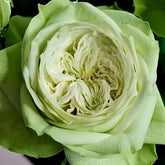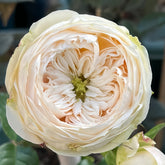Rose Thorns: Are They Toxic? A Gardener’s Essential Safety Guide
by
SmithZoe
19 Oct 2025
Roses are beloved for their stunning blooms and fragrant scent, but every gardener knows one thing about these beauties—they come with rose thorns. Sharp, sturdy, and often hidden among lush foliage, rose thorns are a common concern for anyone who tends to rose bushes. The big question on many gardeners’ minds: Are rose thorns toxic? In this guide, we’ll break down the truth about rose thorns, their risks, and how to stay safe while enjoying your roses.
Are Rose Thorns Toxic? Let’s Set the Record Straight
First, let’s get to the core of the matter: Rose thorns themselves are not toxic. Unlike some dangerous plants (like poison ivy or certain cacti) that have venomous spines or secrete harmful chemicals, rose thorns don’t produce or release toxins. Their primary purpose is to protect the rose bush from animals and damage—not to poison.
But here’s the catch: While rose thorns aren’t toxic, they can still cause discomfort and pose health risks. The real dangers come from the physical injury of a thorn prick and the potential for infection—two issues that every gardener should be aware of when dealing with rose thorns.
What Happens If You’re Pricked by a Rose Thorn?
A rose thorn prick might seem minor, but it can lead to several unwanted symptoms. Here’s what to expect:
- Immediate discomfort: The sharp tip of a rose thorn easily pierces the skin, causing instant pain, redness, itching, or swelling. This is a natural inflammatory response to the physical injury, not a reaction to toxins.
- Infection risk: This is the most serious concern with rose thorns. Thorns can pick up dirt, bacteria, or fungi from the soil, plant debris, or even other plants. When a thorn breaks your skin, these microbes can enter the wound, leading to infection. Signs of infection include increased redness, swelling, warmth around the area, pus or fluid oozing from the wound, or even fever in severe cases.
- Prolonged irritation: Some people may experience mild itching or tenderness for a few days after the prick, especially if the wound doesn’t heal quickly.
How to Stay Safe from Rose Thorns: Practical Gardening Tips
The best way to handle rose thorns is to avoid getting pricked in the first place. Here are simple, effective steps to protect yourself while caring for your roses:
- Wear thick, protective gloves: Invest in high-quality gardening gloves made from leather or heavy-duty synthetic fabric. Thin cotton or latex gloves won’t stand up to sharp rose thorns—opt for gloves with reinforced fingertips for extra protection.
- Cover your arms and legs: When pruning, planting, or tending to dense rose bushes, wear long-sleeved shirts and long pants. This adds a barrier between your skin and any stray rose thorns that might poke through gloves.
- Use the right tools: Avoid grabbing rose branches with your hands. Instead, use sharp pruning shears, loppers, or a small rake to handle stems, leaves, or debris. Dull tools require more force, increasing the chance of slipping and getting pricked by a rose thorn.
- Work carefully and mindfully: Take your time when working around roses. Rose thorns can be hidden among leaves or stems, so move slowly and inspect the area before reaching in. Avoid sudden movements that might catch you off guard.
What to Do If You Get Pricked by a Rose Thorn
Even with the best precautions, accidents happen. If a rose thorn pricks you, follow these steps to treat the wound and prevent infection:
- Clean the wound immediately: Rinse the prick with warm water and mild soap for at least 30 seconds. This washes away dirt, debris, and any microbes that might be on the rose thorn or in the soil.
- Disinfect the area: After cleaning, apply a disinfectant like rubbing alcohol, hydrogen peroxide, or a topical antiseptic. This kills any remaining bacteria that could cause infection.
- Dry and protect the wound: Pat the area dry with a clean towel, then cover it with a bandage or adhesive strip. This keeps dirt out and helps the wound heal.
- Monitor for signs of infection: Check the wound daily for the next few days. If you notice increased redness, swelling, pain, pus, or if you develop a fever, seek medical attention right away. Severe infections can spread, so don’t ignore these symptoms.
- Avoid scratching or picking: Itching is normal as the wound heals, but scratching can break the skin further and introduce more bacteria. Resist the urge to pick at scabs—let the wound heal naturally.
Final Thoughts on Rose Thorns: Enjoy Roses Safely
Rose thorns might be a nuisance, but they don’t have to ruin your gardening experience. Remember: They’re not toxic, but they can cause painful pricks and infections if you’re not careful. By wearing the right protective gear, using proper tools, and acting quickly if you get pricked, you can safely tend to your roses and enjoy their beauty without worry.
Whether you’re pruning, planting, or just admiring your garden, being mindful of rose thorns is key to a safe and enjoyable gardening journey. With these tips, you can keep both your skin and your roses healthy!
Would you like a printable “Rose Thorn Safety Checklist” to keep handy in your garden shed? It summarizes the key protection and treatment steps for quick reference!















